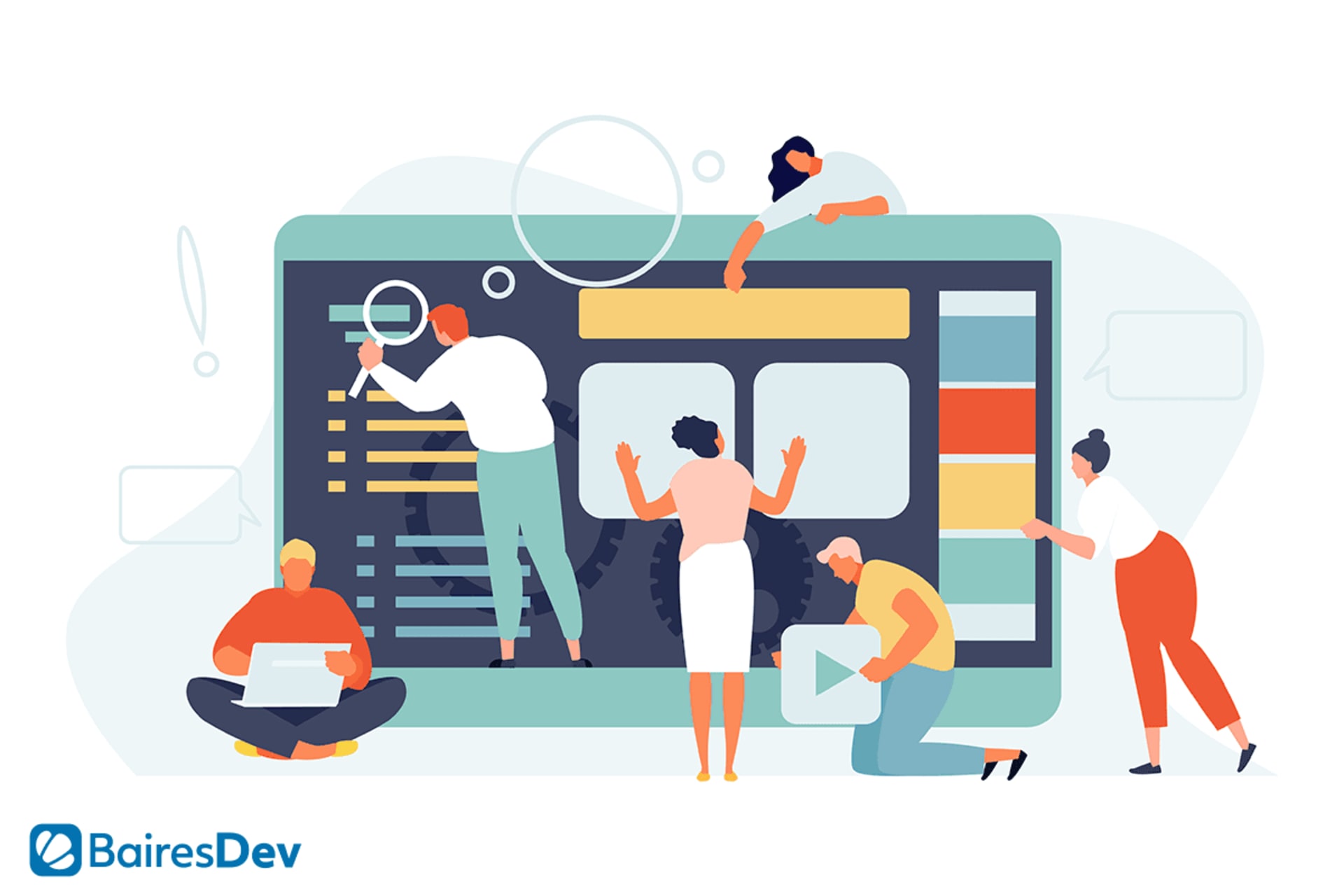If your company has undergone a digital transformation, you may think you’re all set with the latest technology. But, because technological change happens so fast, it’s smarter to think about its place within your organization as a journey rather than as a destination. If you’ve “arrived,” guess what? Next week there might be another change you need to make to keep up with your competitors. So, it’s not just about a once-and-done transformation, but rather about acceleration to keep up.
Digital acceleration is more than a process. It’s a mindset that keeps you always thinking about how you can shift the way you do things and transform your business. Here at BairesDev, we provide numerous services — including software outsourcing, staff augmentation, and JavaScript development services — that help companies think this way and take action when needed.
One of the things we can deliver to help companies stay on track with their own digital acceleration plan is custom software upgrades. This critical technology component can mean the difference between lagging behind competitors and being a leader in your field. That’s true now more than ever. Here we take a look at several reasons why custom software upgrades should be on your to-do list in 2021.
#1 Your Old Software Is Holding You Back
No matter how advanced your current software is, it may still be behind where you need to be right now. For example, a few years ago, cloud computing was “the latest thing.” Maybe you moved some or all of your processes to the cloud. And maybe doing so helped you streamline your operations. But, if that was two or three years ago, it may be time for another move. That’s how fast technology is changing now.
Even 2020 has brought significant changes to how work gets done. For instance, maybe you’ve had to place some of your shipping employees on furlough or even lay them off due to the pandemic. But you still need to send out your products and may require robots and automation software. Or perhaps you run a healthcare facility that needs a dynamic database to keep track of vaccines.
The specific solutions to consider depends on the workflows your company and industry need at this time. Solutions needed may range from teaching tools in the education field to cybersecurity tools for power utilities. But what they all have in common is a way to eliminate anything getting in the way of progress.
#2 You Need to Support Remote Teams
Another big development in the way work has changed in 2020 is the rise of remote teams. Post-pandemic, many of these teams aren’t going back to the office and yet they still need ways to store and access data, communicate, and manage projects. What may have passed for these operations over the last few months — a collection of unrelated applications like Slack, Dropbox, and Zoom — might not work over the long term.
Instead, many companies are opting for integrated solutions that give remote teams easy access to data and ways to communicate about it that don’t allow messages and other critical information to get lost. Many of these solutions enable teams to build their own data or communication modules within hours or days, creating ways to quickly solve production bottlenecks.
#3 The Best Employees Expect the Best Technology
Part of the reason to keep remote work as a new best practice is that it can help you attract the best employees, without being limited to your geographic region. And technology can not only help you get these workers, but it can also help you keep them. The best employees expect advanced technology, so it’s in your company’s best interest to make sure yours is of the highest quality possible.
Customers, too, are becoming more discerning about the technology used by companies they do business with. They expect fast, efficient websites, easy ordering systems, and on-demand omnichannel customer care. They also expect Amazon- or Netflix-like anticipation of what they might like next. In a highly competitive market, customers can easily move on to the next provider if your company doesn’t live up to these standards.
#4 Your Competition Is Upgrading
If you’re not upgrading your software, you can bet your competitors are, and doing so is enabling them to do everything mentioned in the sections above: streamline their operations, quickly innovate and problem solve, attract remote workers, and provide a stellar customer experience (CX). Those abilities are enabling them to attract and retain more customers, earn more revenue and higher profit, and build their reputations in the marketplace.
The following video provides more information about what CX actually is:
Without the right software, your business may be able to keep up for a time. But, at what cost, and for how long? Additional employees needed to maintain outdated processes will eventually cut into profits. Sluggish processes will eventually slow down production and innovation. And less-than-enthused customers will eventually take their business somewhere else.
#5 A Changing World Requires Responsive Software
Change is hard but once you accept there is a need for it, you can make a plan and get the technology that will help to ensure your business can thrive. Here are a few things to think about to get this thought process going:
- Where are you stuck? What processes or technologies are slowing things down?
- What are employees telling you about what they need? What software issues keep them from being as productive as possible?
- What does your business want to achieve? What would it take to get there?
- What is your timeline? How quickly do you want to reach your targets?
- How do you plan to move forward? Do you need just a few technology tweaks or an entire overhaul?
Some of the challenges mentioned in the previous sections can be resolved with commercial off-the-shelf (COTS) software but others definitely require a custom solution. Custom software offers many benefits, including cost-effectiveness, conforming to your unique processes, and being scalable enough to accommodate headcount shifts.
With this level of customization, you can get exactly the solutions you need to achieve the digital acceleration that will easily move your company into its next phase.







